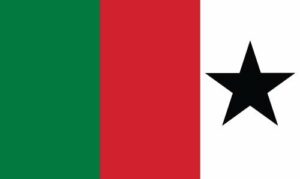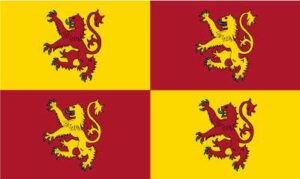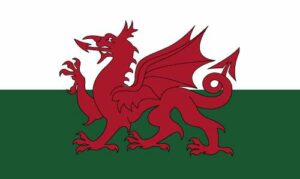St Davids Day Flag. The amazing history of the the flag of St David; and how it's not nearly as ancient as you might think.
In 1994 Julian Brinkworth and John Wake introduced the first ‘hop on, hop-off’ open top bus sightseeing tours of Cardiff. One of the questions asked of the bus tour guides on a regular basis by foreign visitors was, ‘Is there a Welsh national dress?’ They were informed there is for women, but not for men.
Research was undertaken into male national dress for other Celtic countries, including the Isle of Man and Cornwall. John Wake joined forces with Robert Rice from the ‘Welsh Shop’ in Cardiff and work was undertaken, based on Welsh shawl plaid designs etc., to introduce a Welsh plaid (tartan) which they subsequently named the ‘Brithwe Dewi Sant’. This was woven in the Cambrian Woollen Mills in Llanwrtyd Wells.
A form of sporran was designed in mid and north Wales which was named ‘Y’Sgrepan’. They were made in Taffs Well. Jackets were also produced and made in Wales at Llanbrynmair. Welsh Tartan Centre shops were opened, which proved successful, with it’s launch at Cardiff Castle.
It was thought that the new Welsh male uniform needed a form of branding to distinguish it from the established Scottish and Irish tartans. The Red Dragon was not deemed suitable. John went to St David’s Cathedral in Pembrokeshire observing the flag of St David, which was unique to that location. Enquiries then followed with the offices of the Dean of the Cathedral, the College of Arms in London and various other authorities, initially to ascertain the commercial permission of using the flag as a branding. It became clear that the full St David’s flag, with the cinquefoils thereon, was not available, and to use it commercially may have caused offence or be insensitive.
Not many people, including John, knew at the time that the British Union Flag is made up of only three Crosses. St George, St Andrew and St Patrick, but not the Welsh national saint, David. Without any further observations or disagreements, in fact the opposite, with the St David’s authorities, a Cross of St David, minus the cinquefoils, was used to brand the Brithwe Dewi Sant jackets and kilts.
A problem followed as the general population of Wales did not recognise, or had even heard of, or knew, that the Welsh St David’s flag. The yellow/gold cross on a black background appeared a negative aspect in the promotion of the new plaids and tartans.
Hundreds of St Davids Day flags were ordered, made in Wales by MrFlag, and hung outside shops, including the new Welsh Tartan Centre shop in Cardiff. The flags were distributed and shown at County Shows and various nationwide events, including the Royal Welsh. John promoted the flag in Welsh Descendants gatherings in the USA and Canada also. The interest in the St David’s flag was slow and the apparent unjust omission from the Union flag was promoted more vigorously.
Cardiff City Football Club took up the promotion of the St David’s Cross and John wrote a piece of its origins into a matchday programme. He went with the Chief Executive of CCFC to the woollen mills in Mid Wales to show the Brithwe Dewi Sant being produced.
The Welsh Tartan Centre was sold to Swansea firm, Formal Hire, many years ago.





































